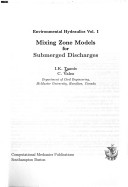Raw and treated liquid waste is routinely disposed of in nearby bodies of water. The disposal method can be as important as the treatment process with regard to maintaining a healthy water quality. Improper liquid waste management can result in an excess of nutrients, heavy metals and toxic organics which can have serious effects on human health. Low levels of dissolved oxygen caused by the oxidation of ammonia and the decay of algae can compromise the suitability of deeper waters as a fish habitat. The water's recreational appeal and aesthetic quality are gradually destroyed as the levels of suspended solids and dissolved organics increase. Liquid waste has traditionally been disposed of by either surface discharges or submerged outfalls. An outfall may take the form of a single pipe, or it may include a diffuser (a section of pipe perforated with two or more outlets called ports). Diffusers are currently the most popular method of liquid effluent disposal, since the fluid is distributed over a larger area, thus increasing the dilution and minimizing the effects to the receiving water.
Mathematical models are frequently employed to determine whether the dilution achieved above a diffuser conforms to water quality standards. This book covers the fundamentals of dilution modelling and evaluates the more recent models using field and laboratory data.
- ISBN10 1853123625
- ISBN13 9781853123627
- Publish Date 21 September 1994
- Publish Status Out of Print
- Out of Print 21 December 2011
- Publish Country GB
- Imprint WIT Press
- Format Hardcover
- Pages 184
- Language English
